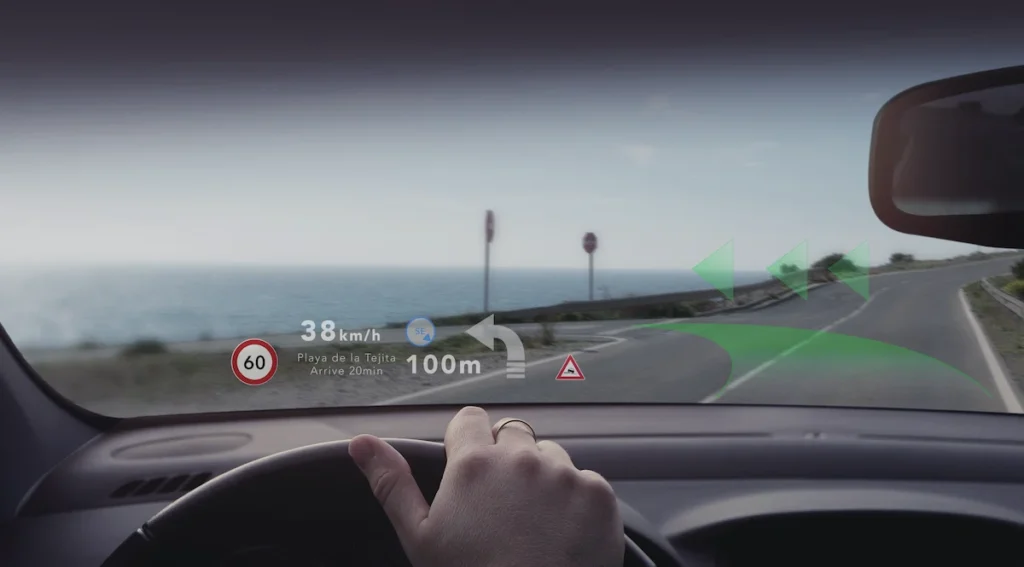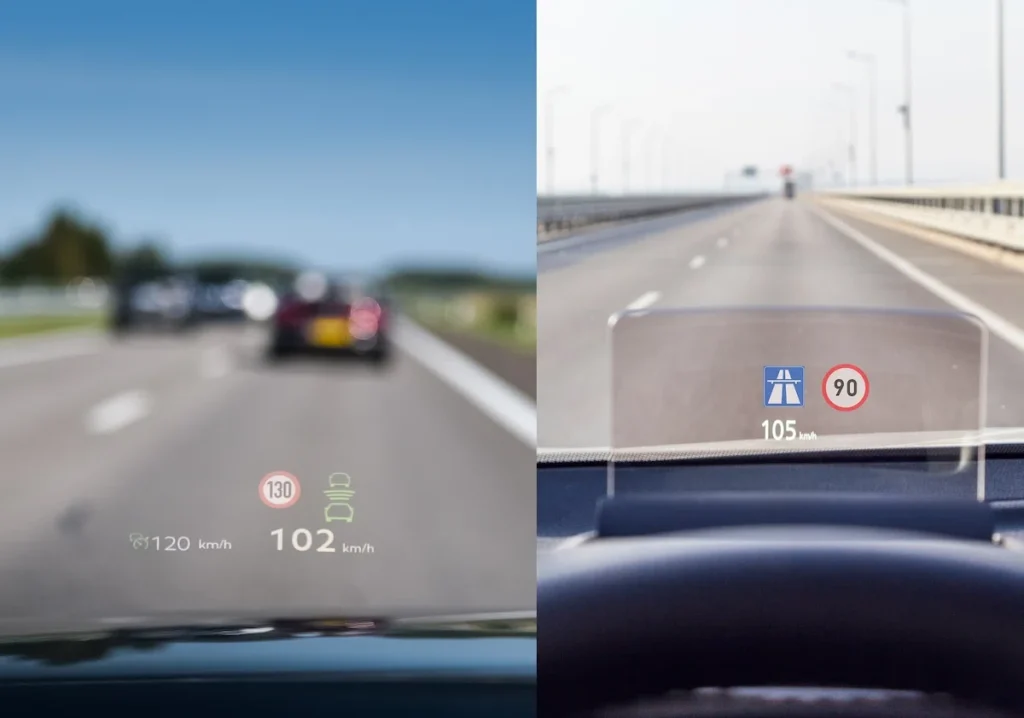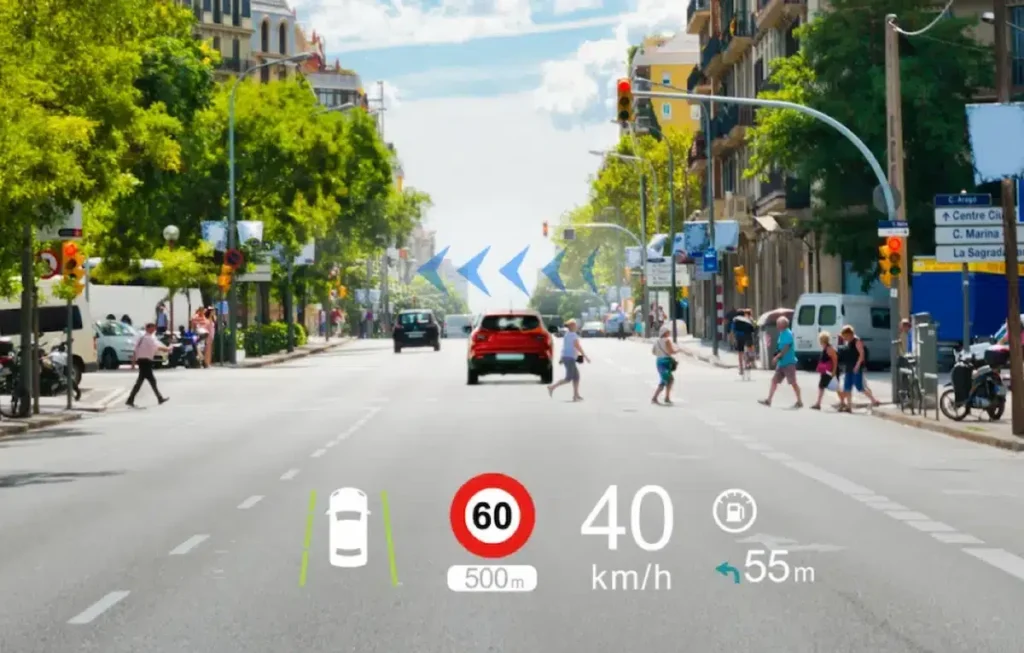- Industries
- Solutions
- About SEKISUI S-LEC
- Downloads
- Contact Us
- What’s NEW


Head-up display (HUD) is a device that displays driving-related information such as speedometer, gasoline/energy level, mileage, navigation, traffic signs, and blind spot warnings in a location easily accessible to the driver’s line of sight. HUD is becoming increasingly popular around the world.
Drivers should keep their eyes on the road as much as possible while driving, as the surrounding environment changes even while they turn their eyes momentarily to the instrument panel to check driving speed or navigation.
HUD contributes to safer driving by allowing drivers to spend less time moving their eyes widely and adjusting their focus.

Head-up displays effectively project information in the driver’s line of sight, allowing the driver to obtain various information without looking away from the road ahead.
In recent years, an increasing number of HUDs collect real-time information on the road, such as pedestrians, traffic signals, signs, and lanes, and combine it with information such as speed and distance between vehicles to project warnings of possible accidents on the windshield.
By improving the driver’s reaction speed and situational awareness, HUDs are expected to protect drivers and pedestrians, preventing traffic accidents. New functions of HUDs are showing up, such as 3D visualization of pedestrians, objects, lane assist and active distance assist are also emerging.

There are two types of head-up display systems in the market: direct type and combiner type.
Direct type is a HUD system that projects images directly onto the windshield. It is superior because the driver can catch information without moving the driver’s eyes.
Combiner type displays information on a small, translucent panel called a combiner, which requires the driver to lower their line of sight to the frame of the combiner installed on the dashboard. In general, the distance from the driver’s eyes to the display screen is shorter, and the display screen is smaller than the direct type.

AR-HUD, or augmented reality head-up display, is a system that displays navigation information, warnings for ADAS functions, Advanced Driver Assistance Systems, and other important information on the road on the windshield in conjunction with real-world driving information.
By collecting information on the road in real-time using sensors and overlaying augmented reality (AR) graphics on the scenery that the driver is looking at, the system enables the driver to recognize pedestrians and obstacles on the road more quickly without moving the driver’s viewpoint significantly, contributing to safer driving.

HUD technology continues to evolve every day for safe driving. The recently introduced AR-HUD can display information necessary for driving on two screens.
Dynamic driving support information such as navigation, ADAS, and route guidance is displayed 10 meters from the driver. Road information such as speed, speed limits, and signs are displayed on another display screen about 3 meters from the driver.
By displaying various driving-related information on two screens, the system improves the driver’s ability to understand the information smoothly, leading to a safe and comfortable driving experience.

SEKISUI S-LEC is a global supplier of wedge-shaped PVB interlayers for HUDs. This interlayer controls the refraction of light to display a clear image projected from the HUD, preventing a double image.
We have contributed to spreading safe and comfortable driving environments through interlayer films for laminated glass, which is also valid for HUDs. Extending the use of HUDs throughout the market is one of our visions.
To understand the attitudes and purchasing behavior of consumers who choose HUD-equipped vehicles, SEKISUI S-LEC conducted interviews with car owners in the U.S., Germany, France, the Netherlands, and China in collaboration with a research firm.
For more information, please click here.